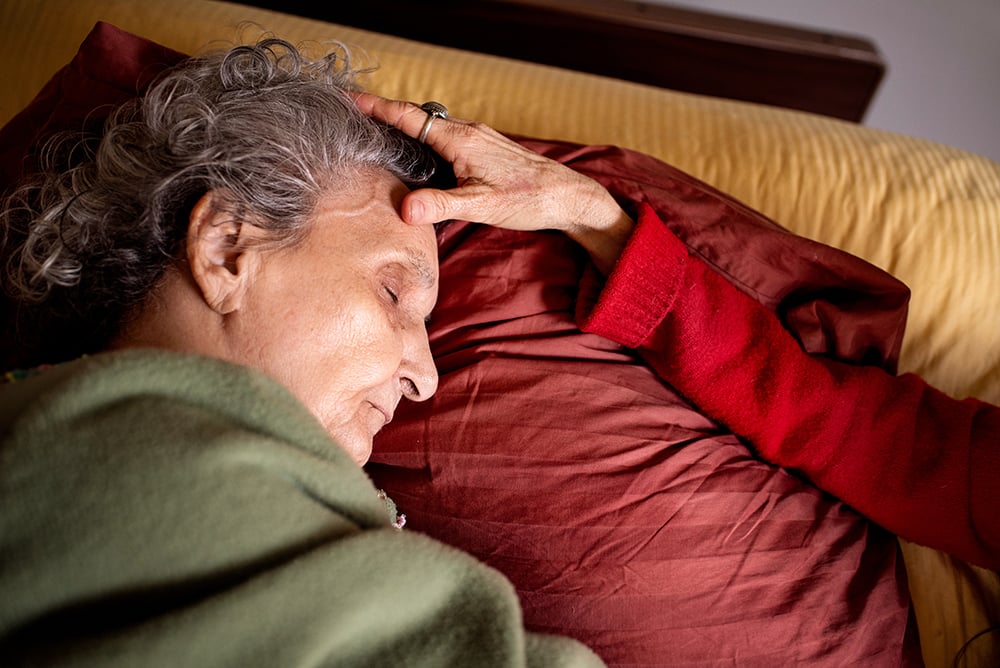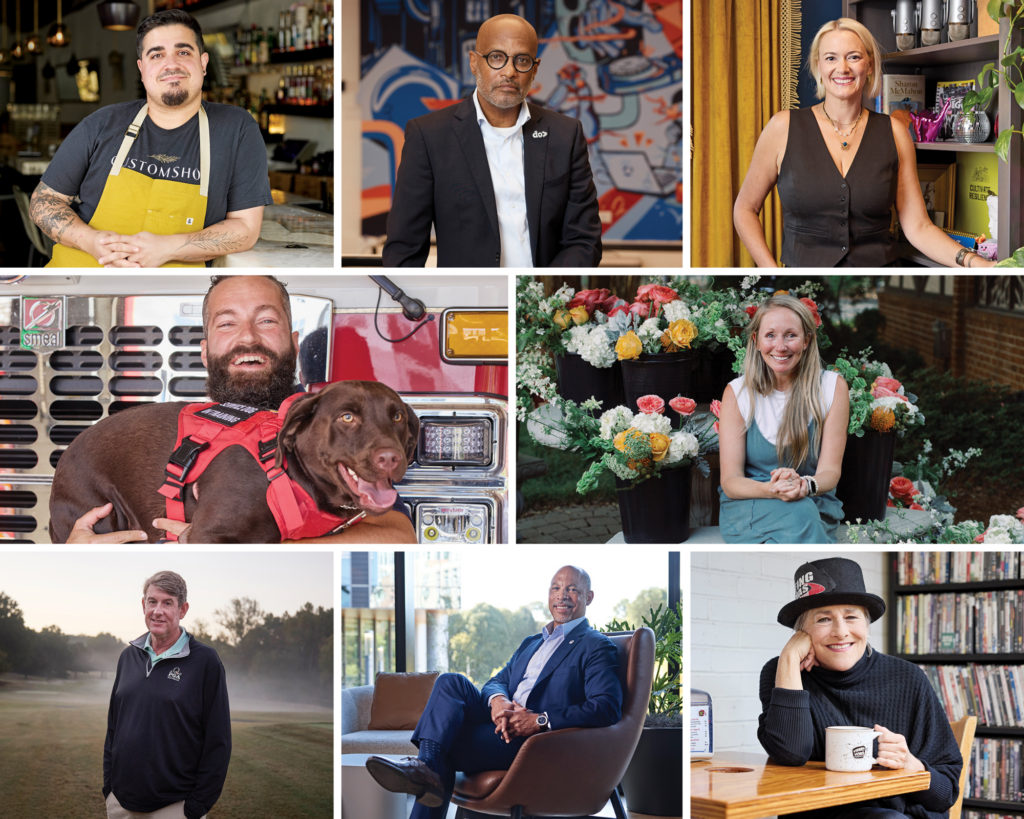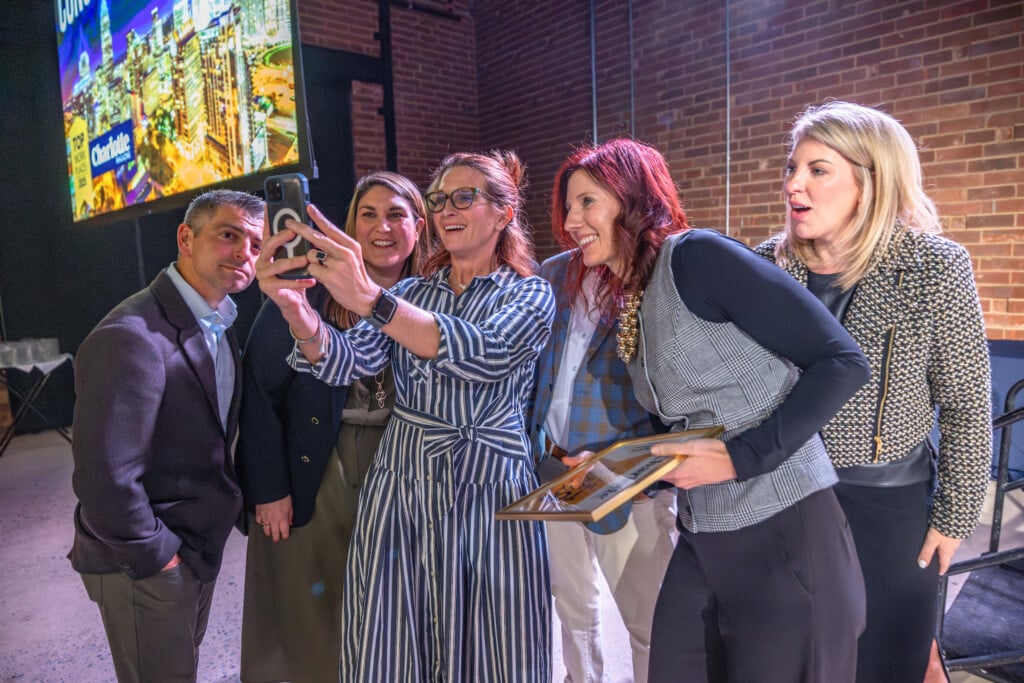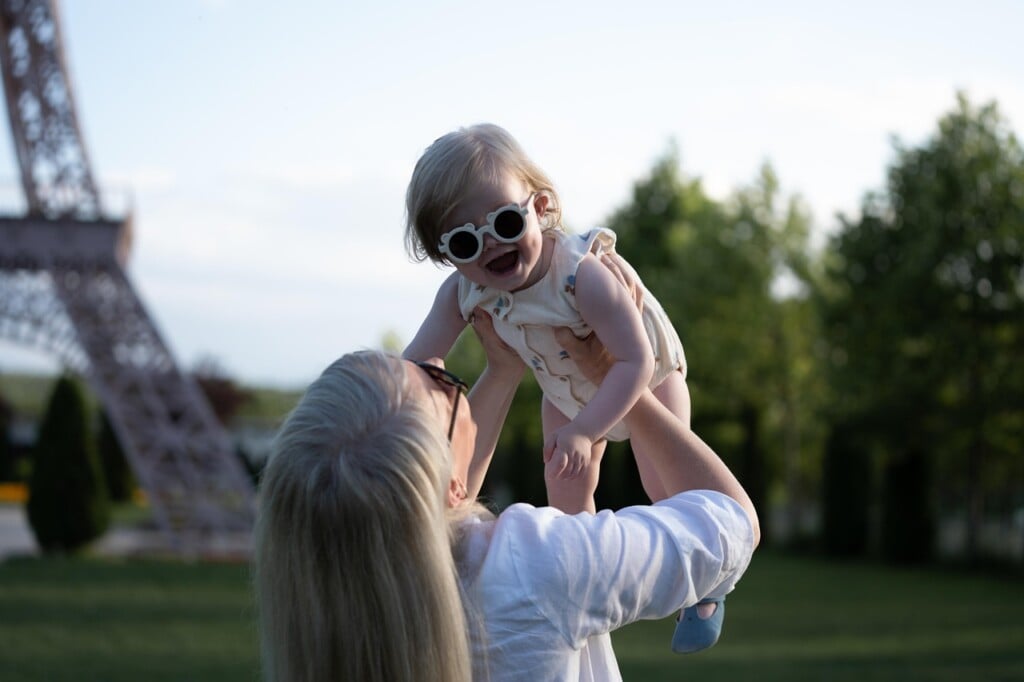Bedside At The Beginning & End: A Photo Essay of Birth & Death Doulas
At birth and death, doulas fill gaps in “hands-on” care that doctors, nurses, friends, loved ones, and money often can’t provide

I photographed my first death at 17.
It was my great-grandmother’s funeral, and something inside me said it was an important moment to document. But it wasn’t until 2018—19 years later, when my father died—when I began to devote part of myself as a documentary photographer to the subject of death and dying.
My dad was already gone by the time I got to his hospital room. The staff informed us that we had to leave soon because they needed the room. I’m stubborn, and I held my ground. I wanted to stay with Dad for a bit, and I did. In the days that followed, the funeral home advertised its services: Products for sale! Mementos! Why, I thought, do some people react to death in such a disconnected way? We don’t treat birth that way, do we?
The experience led me to search for answers about how we—collectively, as a society—hold birth and death. It made me see their similarities and stark differences. I became interested in people who do sacred, quiet work—doulas, professional caregivers in a growing field who provide information, guidance, and emotional support during births and deaths. (The latter are often referred to as “end-of-life” doulas.)
No one tracks how many do this work; doulas are typically not licensed, and most health insurance policies don’t cover their care. But doulas are becoming more commonly known. COVID exposed and worsened strain on health care providers, and research indicates the value of trained and certified birth doulas: A 2022 study published by the National Institutes of Health reported that women who used them had a 53% lower rate of cesarean birth and were 58% less likely to experience postpartum depression or anxiety.
Several organizations offer training and certification for end-of-life doulas, like the New Jersey-based International End-of-Life Doula Association (INELDA) and Florida-based National End-of-Life Doula Alliance (NEDA). Doulas can help with advance care directives, end-of-life care planning, respite for exhausted care givers, and other services. They also offer something less tangible but no less important: someone to listen when patients and loved ones need to talk about death.
Over seven months, I visited and documented the experiences of families as they welcomed new lives and prepared for the loss of others. Here are their stories.
Denawa Deniece, QCity Doula
Birth & Death Doula
It’s 6 p.m., and the doors of Novant Health Presbyterian Medical Center slide open. Denawa Deniece walks in and makes her way to the third floor, where Victoria DeVita, in room 303, has been in labor with her second child for 10 hours.
Denawa, a birth doula for six years, has big cat-eye glasses, copper-red hair, and a joyful presence. Over the next several hours, Denawa makes sure Victoria stays hydrated, places lip balm on her dry lips, fans her to keep her cool, and reminds her and her husband, Nick, about the Taylor Swift playlist they want playing at the moment of birth. Victoria, who’s received an epidural, can’t stand or move around. So Denawa helps Victoria lie equally on both sides to assist with dilation. To pass the hours, Denawa and the couple laugh and talk like old friends. Battery-powered candles and star fairy lights are placed throughout the room. They talk about their favorite restaurants and the special meal Victoria is going to enjoy after she gives birth.
Victoria had a doula for the birth of her first child, a daughter, and knew she wanted one for her second. “It’s so refreshing to have that additional support,” she tells me later. “There’s someone dedicated to be there to make sure I’m not having an awful time.”
Denawa developed an interest in this work when she attended prenatal yoga teacher training and heard about the high mortality rates for Black and brown women. It made her reflect on her own birth experience. “When I had my daughter, I felt like I wasn’t heard,” she says. “They didn’t believe I was in labor.
“I’ve been most surprised by how fulfilling this work has been. I really enjoy cultivating a space where people feel comfortable and in control. My hope is that every person could feel empowered—to have that kind of energy of love and support.”
Near midnight, Victoria tells Denawa that she feels some pressure. “I think we’re ready,” Denawa tells the nurse. The nurse checks. “The baby’s head is right there!” she warns. “Don’t laugh, cough, or sneeze!” Quickly, her husband cues up the Taylor Swift playlist.
Not 15 minutes later, to smiles, laughs, and expressions of “Aw!” Victoria and Nick welcome their second daughter into the world. “My baby!” Victoria exclaims as she looks at her baby girl, Rosemary, for the first time.
Collin Parsons, Doula Differently
Birth Doula
In Plaza Midwood, birth doula Collin Parsons arrives to check on a recent birth client, Candace Stamper, and her 1-month-old boy, Zeppelin. Collin asks Candace about her mental health and how the baby is doing, and she checks for a good latch during breastfeeding. Candace says she felt unsupported during, and trauma from, the birth of her first child. “I thought that if I did it again,” she says, “I’d hire a doula.”
Candace talks about how much she appreciates Collin’s “hands-on” approach. She says Collin provided more than just physical and emotional support. She also gave her detailed information about pain relief, pushing positions, breastfeeding, and other options critical to mothers.
“They aren’t just vessels growing babies,” Collin tells me later. “While those babies are very, very important, so are the people having them and the families that are growing with them.” She says she uses up-to-date data and studies to support clients and help them make informed decisions.
Heidi Snyderburn-Campbell, Birth Story Boutique
Birth Doula
Different birth doulas offer different services. Some, like Heidi Snyderburn-Campbell, perform placenta encapsulation. That’s a controversial practice in which the placenta is turned into pills that the mother takes. Some people believe ingesting placenta pills helps with hormone balance, milk production, energy levels, and quicker recovery. Yet the Centers for Disease Control has advised against taking them because of a risk of bacterial infection.
Still, Heidi’s client, Amanda McHugh, has chosen it. Soon after Amanda gives birth, Heidi will place Amanda’s placenta into a cooler and transport it to her sterilized kitchen, where she’ll rinse and dry it. Then she’ll steam and dehydrate it and turn it into a powder that can fill capsules. “After doing all the research, it just seemed like a no-brainer to me,” Amanda says. “I just wanted to have all the tools to have the most enjoyable experience possible.”
During labor, Heidi has a reassuring presence. She coaches Amanda’s husband, Dan, on where to place his hands on Amanda’s hips to apply pressure and relieve pain. Heidi shows him how to use a long scarf to achieve the same results. Both Heidi and Dan take turns doing this method. As Amanda labors through contractions, Heidi raises a glass of water to Amanda’s lips for a drink, uses a portable fan to cool her down, and encourages Dan to help his wife stand in a supported position to help the labor.
Soon, her baby arrives. She and Dan name him Jordan. A few hours later, Heidi leaves with the placenta. I catch up with Amanda a couple of months after Jordan’s birth, and she says she benefited from the capsules: “I wasn’t feeling too emotional during postpartum, so I think it really paid off.”
Raquel Mendez, Sunflower Within Mama Doula
Birth Doula
Other birth doulas, like Raquel Mendez, provide services like reflexology, reiki, and womb massage, and postpartum services like belly binding: A long piece of fabric is wrapped around a mother’s postpartum stomach to help support the abdominal muscles, pelvic floor, hips, and lower back.
On a rainy morning, Raquel arrives at the home of a recent birth family. She brings gifts for the new baby and his older brother. The couple’s 2-year-old son instantly lights up and starts to snuggle his new blanket.
Raquel has been asked to do a belly binding for her recent birth client, Ashley Cook. She pulls out a 6-foot-long piece of purple fabric that looks like a giant scarf. She gently pulls the fabric around Ashley’s abdomen. The fabric stretches around several times, and Raquel ties it in front. “It’s not too tight, is it?” she asks. That can cause discomfort and even health risks from restriction of blood flow. Ashley shakes her head.
Raquel said she wanted to become a doula because she saw a lack of support surrounding birth. She says something changed in her at the birth of her stillborn niece nearly 30 years ago. “I can’t imagine women having to go through these experiences alone. There are so many women who don’t have support,” she says. “My joy in this work is to witness life and see a mom accomplish the goals that she sets out. We’re holding their hands and hearing their stories, and that’s important.”
Barbara Tyler, Independent doula
Death Doula
On a foggy January morning, Karen Jones is busy feeding her mother, Betty Jones, some homemade, mashed-up purple sweet potatoes. A large chalkboard wall sits at the entrance to the room. The chalkboard wall is covered in love notes and people’s names from Betty’s visitors. Inside the bedroom, there is a daily detailed schedule of all the caregiving duties that must be done for Betty.
Betty suffers from late-stage dementia, and Karen has been her primary caregiver since 2016—an exhausting job, mentally and physically. Betty has in-home aides, but Karen relies on Barbara Tyler as well. Karen wants to be there for her mother, one of 13 children, the way Betty was for her family. But it’s a strain. “I can’t do everything,” Karen says. “Knowing that somebody knows what I’m going through, knowing I can call (Barbara) means a lot.”
Barbara, who is also trained in hospice and palliative care, wears a colorful blouse and has a calm and radiant presence. She sits and patiently watches Karen feed her mother. Barbara and Karen have formed a bond, often laughing and joking with each other. Barbara steps in for services big and small—she gives Karen breaks while she gently massages Betty’s stomach to aid her digestion, helps Betty with range-of-motion exercises, and even plays singing bowls for her. All the while, Barbara provides information and helps Karen with planning. She’s available through calls and texts, even if it’s just to lend an ear.
“It’s a matter of honoring the end transition of life,” Barbara says, “and giving people information of what they might experience at the end.”
Barbara moves over to Betty, removes her socks, places coconut oil on her feet and legs, and begins to massage to help her circulation, which is compromised when someone is immobile. Barbara talks to Betty in a loving tone while she massages. She makes frequent eye contact. Soon, Betty is ready for her nap.
Lisa Moore, Circle of Life Deathcare
Death Doula
Lisa Moore arrives at an assisted living facility near Pineville to help support Laurette Cooke, 104, who is in hospice care. The small room is an explosion of welcoming colors and sounds. Nat King Cole, one of Laurette’s favorites, plays in the background. Her needlepoint canvases of flowers, animals, and famous paintings adorn the walls. Laurette picked up needlepoint in her 50s, but her daughter, Elly Cooke Ross, says she’s always been an artist.
Elly’s here today. Laurette finishes an ice cream sandwich and is ready to lie down. Lisa says sometimes she is there just to provide Laurette with company and stimulation. Other times, like today, she gently applies a Vata massage oil to Laurette’s forehead, cheeks, shoulders, and arms. “Laurette, do you like this?” Laurette softly replies, “Yes.”
Lisa has helped Elly cope with her grief and provided information about what to expect as the end nears. Lisa checks in on Elly and Laurette once a week. “Lisa’s my go-to for so many things,” Elly says. Her death doula work includes energetic body work if needed—for Elly. “We’ve done a lot of grief rituals together,” Elly says. “One session was just energy work, a release of physical energy and grief.”

Death Doula Lisa Moore leads a group of particpants through a “Mantra for the heart” during a sold out grief workshop.
Lisa’s work goes beyond the room where people live out their final days. Circle of Life provides grief workshops to help people process their emotions as their loved ones near death or have died. At a recent workshop, 13 people assemble in a studio next to Lisa’s home in the Ballantyne area. Even in late autumn, the garden next door is full of blooming flowers.
Attendees build an altar space they fill with photos, artifacts, and other mementos. “An altar can help with continued bonds in a relationship,” Lisa says. “It’s important for people to have a continued relationship with the person who has passed.” Throughout the workshop, Lisa and the group focus on meditation, mantras, prayer, and movement—which, Lisa says, helps the body release grief.
Angela Zimmer, Independent doula
Death Doula

Darmarcus Wilson and Juliann Di Benedetto-Wilson hold a photo of their son in front of the basketball hoop that he used to play at for hours.
Late one night in 2023, the lobby at Atrium Health Carolinas Medical Center is packed with friends and family of a 12-year-old boy, Jailen Wilson, who’s on life support. Every chair and space is occupied by people who wait to say goodbye. Small groups of people take turns visiting his room. Among them is death doula Angela Zimmer, a family friend contacted soon after an aneurysm in Jailen’s brain burst less than 48 hours ago.
“I believe everyone deserves care when they’re dying or when someone they love is dying or has died,” Angela tells me much later. “I became the person I needed most and didn’t have when my dad died when I was 11. I’ve always been comfortable around grief and able to show up for friends over the years in ways that many people cannot. When I read an article about death doulas in 2013, I decided I’d become one someday, and I did in 2020.”
At the hospital, Angela offers sound advice and stability in chaos. She tells Jailen’s parents, Darmarcus Wilson and Juliann Di Benedetto-Wilson, that they have the right to bathe and clothe their son after he is taken off life support. Darmarcus and Juliann choose to give Jailen a sponge bath and dress him in the jersey of his favorite player, Ja Morant, and basketball shorts.
“I would have never known that was an option if it weren’t for her,” Juliann says later. “I wish people knew that there are people you can have to support you—a person who knows how to walk through grief and death and be able to hold your hand without you having to carry them, too.”
It’s two years later. A pair of basketball goals stand next to the sidewalk chalk-decorated concrete surface of the driveway at the Wilsons’ home in Concord. They’re a reminder that Jailen had a natural talent for basketball, along with other sports. Jailen, one of five children, was the type of kid his two younger brothers looked up to. He taught his brothers how to play ball and shot videos of them. When Juliann woke up, Jailen would already be out there, dribbling and shooting.
Throughout Jailen’s brief hospital stay, Angela did a variety of things: arranged pickup at the airport for family members, asked the doctors hard questions on the family’s behalf, picked up food, and worked with the hospital liaison to make sure the family could get handprints made. She also helped arrange a meal train and donations for the family and helped set up Jailen’s celebration of life a few months later. Her work and presence were glimmers of light in the darkest of times.
“We didn’t have to worry about all the other things,” Darmarcus says. “Having her there gave me time to say goodbye to my son. I’ll forever be grateful.”
Tammy Chung, Independent doula
Death Doula
Down a long dirt road in west Charlotte, in a small house surrounded by woods, a group meets under a program called Death and Dying 101. Tammy Chung started the group to offer a way for people to openly discuss end-of-life topics in an accepting environment.
One woman shares her heartbreak of losing her sister and mom in a car crash that she was also in. The room is silent. Tammy shares her own story about being present for the death of her uncle. She says confronting her own fear of death led her to become a death doula. “I want to change the dialogue in my family,” she says. “That’s why I got into this.”
















